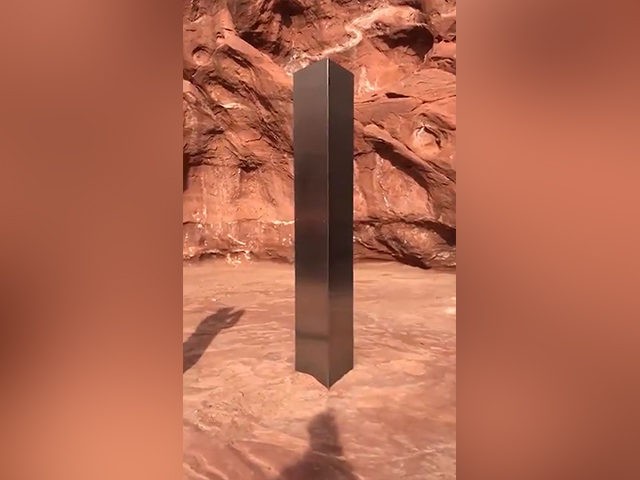A nebulous group of “stunt artists” wrote an Instagram post on Friday taking credit for the mysterious metal monolith discovered by Utah wildlife officials two weeks ago, plus two similar structures that later appeared in California and Romania.
The group, which collectively refers to itself as “The Most Famous Artist,” is offering to provide monoliths on demand for $45,000.
The monoliths, which bemused observers for their resemblance to the evolution-shaping alien structures from 2001: A Space Odyssey and their habit of appearing suddenly in remote locations, turned out to be a viral marketing stunt for the artistic collective and its “monolith-as-a-service.com” website, according to the artists.
The art group, which writes posts on social media as though it were a single person, is now offering monoliths for sale with “authentic dimensions and museum-quality materials,” delivered in four to six weeks with extensive proof of authenticity. By way of comparison, the alien creators of the 2001 monoliths never provided any proof of authenticity, unless you count the ghost of an astronaut randomly appearing to tell people that something wonderful was about to happen.
“The Most Famous Artist” posted several articles about the monoliths in Utah, Romania, and California on its Instagram page, building up the mystery of the installations before concluding with a picture of a masked artist building a monolith and the playful taunt, “You mean it wasn’t aliens?” The group told several of its online followers that it was responsible for all of the structures.
The New York Post quoted one of the artists, Matty Mo, discussing the project in an interview with Mashable:
“I am not able to say much because of the legalities of the original installation,” Mo wrote to Mashable via Twitter. “I can say we are well known for stunts of this nature and at this time we are offering authentic art objects through monoliths-as-a-service. I cannot issue additional images at this time, but I can promise more on this in the coming days and weeks.”
Meanwhile, potential collaborator Carlos Estrada noted on Instagram: “did me and @themostfamousartist make the monolith?” to which The Most Famous Artist responded in their own story: “NOT NO.”
Mashable noted that photographer Erik Junke, aka @photojunke on Instagram, could be another collaborator, adding that Junke posted images of the California desert captioned “Doorway” and “Doorway II.” The posts were also tagged “#monolith” and were included in the stories and were reposted by The Most Famous Artist and captioned: “Are people talking about monoliths or something? It’s like they didn’t see it coming.”
The “legalities of the original installation” would presumably include the Utah Bureau of Land Management making a public announcement that “it is illegal to install structures or art without authorization on federally managed public lands, no matter what planet you’re from.” Not only are there matters of environmental sensitivity and trespassing on federal land to consider, but putting large numbers of monoliths in the same place has been known to cause planets much larger than Earth to collapse, so keeping the number of monoliths down is a vital public safety concern.
The mystique of the Utah monolith was somewhat tarnished when four men rolled up in a pickup truck to dismantle it ten days after its discovery. Based on subsequent social media postings, those individuals appear to be working for a different publicity-stunt group that disliked the monolith and the influx of tourists it brought to its remote location.
Observers noted that the three monoliths were all slightly different in construction, leading to speculation that the structures in Romania and California might have been copycat stunts. Early theories held that the Utah monolith was the work of sculptor John McCracken, a fan of science fiction works like 2001 who died in 2011 after telling his son he had secretly created artwork in remote locations to be discovered after his passing.
The Utah monolith became a viral Internet sensation big enough to attract the attention of major corporate brands, which will be an amusing detail for those who have read Arthur C. Clarke’s “Space Odyssey” series to its conclusion.

COMMENTS
Please let us know if you're having issues with commenting.